|
1. Judson Church is Ringing in Harlem (Made-to-Measure) / Twenty Looks or Paris is Burning at the Judson Church (M2M), Trajal Harrell + Thibault Lac + Ondrej Vidlar (Festival TransAmériques) American choreographer Trajal Harrell’s work has always been impressive if only for its sheer ambition (his Twenty Looks series currently comprises half a dozen shows), but Judson Church is Ringing in Harlem (Made-to-Measure) is his masterpiece. In the most primal way, he proves that art isn’t a caprice but that it is a matter of survival. Harrell and dancers Thibault Lac and Ondrej Vidlar manifest this need by embodying it to the fullest. The most essential show of this or any other year. 2. ENTRE & La Loba (Danse-Cité) & INDEEP, Aurélie Pedron Locally, it was the year of Aurélie Pedron. She kept presenting her resolutely intimate solo ENTRE, a piece for one spectator at a time who – eyes covered – experiences the dance by touching the performer’s body. In the spring, she offered a quiet yet surprisingly moving 10-hour performance in which ten blindfolded youths who struggled with addiction evolved in a closed room. In the fall, she made us discover new spaces by taking over Montreal’s old institute for the deaf and mute, filling its now vacant rooms with a dozen installations that ingeniously blurred the line between performance and the visual arts. Pedron has undeniably found her voice and is on a hot streak. 3. Co.Venture, Brooklyn Touring Outfit (Wildside Festival) The most touching show I saw this year, a beautiful portrait of an intergenerational friendship and of the ways age restricts our movement and dance expands it. 4. Avant les gens mouraient (excerpt), Arthur Harel & (LA)HORDE (Marine Brutti, Jonathan Debrouwer, Céline Signoret) (Festival TransAmériques) wants&needs danse’s The Total Space Party allowed the students of L’École de danse contemporaine to revisit Avant les gens mouraient. It made me regret I hadn’t included it in my best of 2014 list, so I’m making up for it here. Maybe it gained in power by being performed in the middle of a crowd instead of on a stage. Either way, this exploration of Mainstream Hardcore remains the best theatrical transposition of a communal dance I’ve had the chance to see. 5. A Tribe Called Red @ Théâtre Corona (I Love Neon, evenko & Greenland Productions) I’ve been conscious of the genocide inflicted upon the First Nations for some time, but it hit me like never before at A Tribe Called Red’s show. I realized that, as a 35 year-old Canadian, it was the first time I witnessed First Nations’ (not so) traditional dances live. This makes A Tribe Called Red’s shows all the more important. 6. Naked Ladies, Thea Fitz-James (Festival St-Ambroise Fringe) Fitz-James gave an introductory lecture on naked ladies in art history while in the nude herself. Before doing so, she took the time to look each audience member in the eye. What followed was a clever, humorous, and touching interweaving of personal and art histories that exposed how nudity is used to conceal just as much as to reveal. 7. Max-Otto Fauteux’s scenography for La très excellente et lamentable tragédie de Roméo et Juliette (Usine C)
Choreographer Catherine Gaudet and director Jérémie Niel stretched the short duo they had created for a hotel room in La 2e Porte à Gauche’s 2050 Mansfield – Rendez-vous à l’hôtel into a full-length show. What was most impressive was scenographer Max-Otto Fauteux going above and beyond by recreating the hotel room in which the piece originally took place, right down to the functioning shower. The surreal experience of sitting within these four hyper-realistic walls made the performance itself barely matter.
1 Comment
A month ago, I wrote that I go see dance because I love when people shut the fuck up. Yet last night I was ready to completely backtrack on this statement. It just goes to show that, with art, there is never any definite set of criteria that one can judge a work by, that art is chemistry that produces as many reactions as there are elements and audience members.
The occasion was Belgium-based American choreographer Meg Stuart’s unmissable return to Usine C with her solo Hunter. Her father was a community theatre director, she will tell us. As a result, she witnessed a lot of bad acting as a child, so she swore she’d never speak onstage. And for the first hour of this 90-minute show, she doesn’t. Treating her body as an archive of dance and memories, she moves in the style that has made her a contemporary dance icon. The collage aspect of the work is underlined incessantly, from the actual collage Stuart is making sitting at a table (and projected onto a screen at the back of the stage) at the beginning of the show to the sound collage by Vincent Malstaf and the video collage by Chris Kondek. I hear you loud and clear. It might be this aspect that most deters from the work. Like the soundtrack that moves through sound clips as though someone were switching through radio dials and never settling on any one channel, Stuart never sticks with anything for long, making us feel like we’re looking at a dancer improvising in the studio as she maintains a steady pace that comes across as manic. We want to tell her to calm down, to stand still for a moment. In her last show seen in Montreal, Built to Last, Stuart had touched on the ephemeral nature of dance by contextualizing it within a set that included a giant mobile of our solar system and mock-up of a T. rex skeleton. However, even though the set is also imposing in Hunter, it still replicates the blankness of the black box. In effect, it is like the table upon which Stuart does her collage: a rectangular blank surface on which beams are scattered around (like the pins used for her collage) from which rolls of fabric hang and are used as screens for the video projections. As a result, Stuart’s dance is decontextualized. What a welcomed change it is when she finally speaks. She maintains the stream of consciousness trope used throughout the show, but we do want to hear what she has to say about her life, about art, about anything. She’s Meg Stuart. She can speak onstage as much as she wants and we’ll listen. October 13-15 at 8pm www.agoradanse.com / www.usine-c.com 514.521.4493 Tickets: 38$ / Students or 30 years old and under: 30$ WARNING: spoilers.
La crème de la crème of Quebec celebrities (Sébastien Benoit) and their children (Sébastien Benoit’s child) were at the Bell Centre Wednesday for the first of a four-day run of Ice Age on Ice. The show begins with a squirrel finding an acorn. He buries it in… something and a rocket goes off. Follows a parade of the main characters of Ice Age on Ice: a sloth, a male and a female mammoth, two possums, a cougar, and their monkey friends. Though the dialogue is in French, all the songs are in English, so they sing “It’s your birthday / Happy birthday!” to mister mammoth in a surreal scene, like if one witnessed the 1990 live action Teenage Mutant Ninja Turtles ice skating. (Did they do that yet?) The cougar’s back legs are paralyzed, but luckily they slide easily against the ice. The mammoths are also held up by wheelchairs, so it’s nice that there’s a positive message against ableism. Comes the triggering factor: the aforementioned acorn stuffing caused a volcano to wake up and it’s threatening to wipe out our heroes’ party with its lava. The sloth recalls a legend about an icy berry that freezes everything it touches, which seems like a rather simplistic solution to global warming. This gets exemplified by a dozen abstracted glittery snowflakes with Mohawks and a bird who spin to show they’re happy about the cold, which lets us know they’re not from Quebec. As the show is aimed at children, it’s not surprising to notice some slapstick, like when the sloth tries to catch a snowflake with its tongue and falls down. Children love to see people fall. Adults do too, but only when it’s not on purpose. So our heroes decide to go on a hunt for the icy berry in order to throw it in the volcano and freeze it over. The lady mammoth stays home though because that’s where women belong. There is also the inevitable complication in the shape of a female fox who wants the berry for herself because it would allow her to remain frozen in youth because women are vein and don’t care about being burned alive by lava just as long as they look good all the while. Enters a squirrel who is also female, which we know because she is limp-wristed, waves her arms around a lot and wears makeup, as lady squirrels do. She’s an acorn-digger who needs a male squirrel so he can give her his nuts because she can’t get them herself. Her boobs get in the way. Except that mister squirrel realizes he lost his nut and has a psychotic breakdown in what is by far the highlight of the show. He hallucinates sixteen acorns dancing around him in what can be best described as a psychedelic drug trip. Then there’s the Zamboni. No, wait… It’s just the mammoth’s big ass! I love fat jokes. Anyway, they get the frozen berry, the fox tries to steal it but fails by losing it in a hockey match and apologizes for her behaviour. She’s surprised that our heroes would still want to hang out with her, which is understandable because what a sausage party! But then it turns out that two possums ate the frozen berry. Why our heroes would leave the life-saving berry to animals who were clearly not aware of their plan is beyond me, but it doesn’t matter because it becomes obvious that the berry has no magical powers since the possums don’t turn to ice. Take that, magical-thinking solution to global warming! That’s when mister mammoth has an idea: what if they caused a snow avalanche that would put out the volcano by jumping up and down? (Does this even make sense scientifically?) He asks his lady what she thinks and she replies that she believes in him because she’s a supportive woman with no opinion of her own. I’ll let you guess how it ends. The show follows a simplistic structure: plot, figure skating, plot, figure skating, ad nauseam; like if Xavier Dolan was into the Ice Capades instead of slow motion. As with stories in contemporary dance, the two fail to connect in any meaningful way. All we perceive is the poverty of dance as a storytelling medium. Do we really need stories to make us swallow everything, including figure skating? There’s something almost patronizing about it, like Ice Age on Ice is just using characters kids already know and love to shove figure skating down their throat. As Spice World already pointed out back in 1997, it doesn’t matter what happens. Hell, nothing even needs to happen. All we need are those recognizable faces and we’ll eat it up. Ice Age on Ice did give me a few ideas as to how contemporary dancers could make more money though:
August 24-27 www.evenko.ca 1.855.310.2525 Tickets: 29.25-100.50$ It’s not often we get to see intergenerational friendships dealt with such directness and subtlety as in Brooklyn Touring Outfit’s Co. Venture, presented at Centaur Theatre’s Wildside Festival. There is David Vaughan: 91 years old, British, dancer, singer, actor, choreographer, and archivist of the Merce Cunningham Dance Company. And there is Pepper Fajans: 31 years old, American, designer, builder, performer, carpenter, and personal assistant to Merce Cunningham.
Neither of them appears onstage at first. It is rather a large wooden board that slides out from backstage, moving across the floor – part of the set, surely – but that then disappears through another door… before coming back onstage. As it slides away, it reveals Vaughan, sitting on a chair. When the board falls down, we think of the huge wall that comes tumbling down with a powerful gust of wind in Sasha Waltz’s Körper, though that’s not what happens here; the board turns out to be so light it barely makes a sound. Vaughan speaks and we listen. That accent. That deep voice. When Fajans joins him onstage, they begin to reminisce about the past, about how they met working for Cunningham. We can see Fajans’s eyes looking inside his own head, trying to remember his lines (successfully). It’s endearing. It almost looks like he’s trying to remember the actual events. Plus it was the first show of the run; the text is bound to come back to him. Fajans periodically returns to the board. As he handles it, it inevitably shapes his body, flattening it, making it more angular, reminding us of Cunningham’s geometric choreography. Vaughan remains in his seat. “I can’t stand on one leg anymore,” he will later tell us. Co. Venture is also about dis/ability. Fajans sits next to his friend and together they dance with great economy, gently tapping their feet and waving their arms before them. It’s so small, yet there’s an undeniable magic. It’s amazing what can happen when you meet people on their own turf, like choreographer Maïgwenn Desbois does. “Use your body,” Fajans says, as he dances vigorously. That sentence means different things to different people. There is an awkwardness to his own movement, like it’s too big for him; he always seems to be overreaching, jumping just a bit too far. We can see the struggle, the trembling, just as we did when the Cunningham Company last passed through Montreal at Festival TransAmériques in 2010. I’d never made a link between Cunningham and Daniel Léveillé, though now it seems obvious. Fajans rests his arms on a lengthy stick, turning himself into a scarecrow-like cross. Then, it’s large skeletal puppets – flat heads resting on three long pieces of wood pivoting around the screws holding them together – that shape and replicate his body, awkward elongated limbs extending into space. It’s hard to do a show like Co. Venture justice. It’s so simple, yet so charming and touching. Too rarely are dis/ability and intergenerational friendships explored in contemporary North America. After Cunningham had a stroke, he lost control of one of his arms. Still, he kept finding ways to move. “He found more and more ways to do less and less,” says Vaughan. It reconciles one with life and ageing. January 7-16 www.centaurtheatre.com 514.288.3161 Tickets: 16$ / Students or under 30 years old: 13$
Things could have gone down a more simplistic road as, at first, Gutierrez and his partner Mickey Mahar (a sprite-like cross between Sufjan Stevens and Pee-wee Herman) dance synchronously non-stop as percussive music is blasting over the speakers, barely taking a break as Mahar slips a “2, 3, 4” in before launching into yet another dance sequence. However, it’s when they finally stop that the show ironically progresses. The music keeps going, just as loud, but they stand still – much needed rest – holding hands.
When I was young, I used to believe that two people of the same sex holding hands was a political gesture. Then, when I had my first boyfriend, I realized that it wasn’t political but merely natural, that it happens without thinking or even realizing you’re doing it, that your hand searches for the one you love. What I’m saying is, people holding hands are fucking beautiful and Guttierez and Mahar are fucking beautiful. Slowly, their heads turn towards each other and they kiss. So we guess, anyway, since one of them has his back to us, so that they could be pulling a Will Smith in Six Degrees of Separation (but we can safely assume they’re not). And the dance starts up again, in a way that could remind one of the choreography for countless female pop singers. The movements are not difficult to execute, but they become more impressive as they accumulate, playing like a physical version of a memory game. The clarity of and work behind the movement is retroactively highlighted as the dancers switch to a different mode of performance, one that reeks of drunk clumsiness. They display the kind of behaviour where, in the moment, one might be blissfully unaware (humping a speaker, for example); it’s only once you sober up that it’s going to be embarrassing. They also fight in a way that’s more meant to annoy the other person than actually hurt them. In the spoken section, they impressively maintain their synchronicity even as they vary their speech in most comical ways. Particularly delightful is when they say, “We are the faceless, voiceless dancers. Do you want to fuck us?” Unfortunately, Age & Beauty Part 1 ends with its weakest section. Though it decidedly brings us in a different direction, Guttierez’s breaking into song doesn’t fit with the rest of the work. Instead, it feels like a performer’s fantasy, one that has the added drawback of putting Mahar in the background, where he doesn’t belong. Still, Guttierez remains a refreshing voice in queer performance and dance at large. May 23-25 Théâtre Prospero www.fta.qc.ca 514.844.3822 Tickets: 34$ / 30 years old and under: 28$ 1. Tragédie, Olivier Dubois (Danse Danse)
Avec son opus pour dix-huit danseurs nus, Dubois a abordé les grands thèmes (le passage du temps, la mortalité, la petitesse de la vie humaine, le rôle de l’art, l’humanité) en prenant son temps, en n’empruntant aucun raccourci facile, en laissant le sens émerger de lui-même. 2. Uncanny Valley Stuff, Dana Michel (Usine C) Avec Uncanny Valley Stuff, Michel a continué sa recherche entamée avec Yellow Towel, spectacle qui figure dans le top dix du magazine new-yorkais Time Out et pour lequel le prestigieux festival ImPulsTanz a créé un prix spécialement pour elle. Sa nouvelle courte pièce est toute aussi incisive mais encore plus drôle. En empilant les clichés sur les Noirs jusqu’à ce qu’ils s’entremêlent et se contredisent, Michel démontre l’absurdité de ces stéréotypes qui nous présentent une vision déformée du monde. 3. Antigone Sr.: Twenty Looks or Paris Is Burning at the Judson Church (L), Trajal Harrell (Festival TransAmériques) Antigone Sr. a probablement été le spectacle de danse qui a créé le plus de divisions cette année. On pourrait diviser le public en trois : ceux qui ont quitté la salle, ceux qui sont restés assis les bras croisés, et ceux qui se sont levés pour danser. Il n’est donc pas surprenant que le spectacle se retrouve dans mon palmarès. Il faut dire que je suis queer et que j’ai une affinité pour la danse post-moderne, ce qui me donne une double porte d’entrée sur le sujet. Pour ceux qui n’ont pas eu l’endurance nécessaire pour passer à travers ce défilé de mode DIY de deux heures, il serait bon de noter que les plus grands bals qui ont inspiré la pièce pouvaient durer jusqu’à dix heures de temps; comptez-vous chanceux! Peut-être comprenez-vous maintenant un peu mieux ce que c’est que de se sentir aliéné par la culture dominante. 4. Monsters, Angels and Aliens Are Not a Substitute for Spirituality…, Andrew Tay (OFFTA) Pour être honnête, lorsque j’ai vu la nouvelle pièce de Tay, qui vire de plus en plus dans le performance art, je me suis demandé si j’étais en train de regarder un artiste perdre la tête sur scène ou si Tay était en contrôle de son art. J’étais évidemment assez intrigué pour découvrir la réponse avec Summoning Aesthetics qu’il a ensuite présenté avec François Lalumière au Festival Phénomena. Conclusion : Tay continue dans la même veine ritualiste, sachant clairement dans quelle direction il va même s’il ne connaît pas nécessairement sa destination. J’ai admiré qu’il ait pris la décision de terminer Monsters sur une note différente de ce qu’il avait prévu pendant la représentation même. La misogynie latente qui avait l’habitude d’hanter ses pièces est disparue. Ce qui demeure est son ludisme, son humour et son ouverture aux expériences, peu importe ce qu’elles s’avèrent être. Si je me souviens bien, un spectateur avait qualifié Summoning Aesthetics « d’honnêteté perverse. » Cela me semble aussi approprié. 5. Built to Last, Meg Stuart (Festival TransAmériques) Avec Built to Last, Stuart (qui a reçu le Grand Prix de la Danse de Montréal) a abordé des thèmes similaires à ceux de Tragédie d’Olivier Dubois, mais de façon beaucoup plus théâtrale. En juxtaposant un immense mobile de notre système solaire avec une maquette d’un tyrannosaure et la danse contemporaine avec la musique classique, Stuart a démontré l’insignifiance des actions humaines et que notre seule rédemption possible se trouve dans l’art. 6. Florilège, Margie Gillis (Agora de la danse) Pour célébrer ses quarante ans de carrière, Gillis nous a offert cinq pièces de son répertoire revisitant les années 1978 à 1997. Par le fait même, elle nous a rappelé pourquoi elle est devenue une danseuse de telle renommée. L’intangible se manifeste à travers son corps, soulignant la fragilité de l’humain dans un univers chaotique. 7. Mange-moi, Andréane Leclerc (Tangente) Leclerc a utilisé la contorsion et la nudité pour aborder les relations de pouvoir entre les individus lorsque notre survie dépend des autres. Qu’elle puisse s’attaquer à de telles questions tout en offrant une des pièces les plus sensorielles de l’année démontre l’intelligence de son travail. 8. Tête-à-Tête, Stéphane Gladyszewski (Agora de la danse) Ma réaction à ma sortie de cette pièce de quinze minutes pour un seul spectateur à la fois : on doit donner à Gladyszewski tout l’argent dont il a besoin pour réaliser ses projets. Aucun autre chorégraphe n’arrive à intégrer la technologie avec autant d’adresse. Tête-à-Tête était à la fois intime, inquiétant et magique. 9. The Nutcracker, Maria Kefirova (Tangente) L’excentrique Kefirova a troqué l’écran vidéo pour des haut-parleurs et a démontré qu’elle maîtrise le son avec autant de flair que l’image. « Elle n’utilise pas le son pour meubler le silence comme le fond maints spectacles, mais pour matérialiser l’invisible, » disais-je. Difficile d’oublier la satisfaction ressentie lors de l’exutoire du tableau final, où Kefirova s’acharne à faire éclater des noix de Grenoble en morceaux en se servant de ses chaussures à talons hauts comme casse-noisette. 10. Junkyard/Paradis remix, Catherine Vidal (Usine C) J’espère avoir assez établi le fait que je suis un fan fini de Mélanie Demers pour pouvoir dire ceci (qui, je crois, n’est pas l’opinion populaire) : Junkyard/Paradis est probablement sa pièce que j’aime le moins. Lors de l’événement MAYDAY remix, où la chorégraphe a laissé des artistes remixer son travail, la metteure en scène Catherine Vidal a donné au spectacle la structure dramatique qu’il méritait avec une fin des plus jubilatoires. 11. loveloss, Michael Trent (Agora de la danse) Extrait de ma critique : « Trent n’a toujours pas peur de prendre le temps qu’il faut. De plus, il évite ici l’humour, le théâtral et le mouvement séducteur (athlétique, rapide, synchronisé), toutes ces astuces que des chorégraphes moins confiants utilisent pour que leur dance soit plus accessible. L’interprétation est sentie sans être affectée. loveloss est une œuvre touchante … » 12. Milieu de nulle part, Jean-Sébastien Lourdais (Agora de la danse) Pour la performance de l’année, celle de Sophie Corriveau, qui s’est méritée la toute première résidence de création pour interprètes offerte par l’Agora de la danse. Notons que le diffuseur s’est démarqué avec une programmation solide pour une deuxième année consécutive.
I must admit that the heaviness of the footwork caused me to experience a bit of anxiety. (I was sitting in the first row.) Particularly striking is the floor work sequence where, down on her knees, Murugesan moves around the stage without ever using her hands as they are busy holding flowers and a plate. Rather, she spins using her toes and knees as pivots and slides across the floor on her shin.
In the final section, she drops handfuls of nickels on herself, which roll across the floor and end up covering the stage in a way that might recall the walnuts scattered by Maria Kefirova in the very same space for The Nutcracker. A different register awaits us for Débile Métal. When we enter the room, a heavy metal song with especially dickish guitar riffs is playing while an image of a thorn-crowned Jesus is projected onto a black curtain at the back of the stage. As soon as the song ends, the image fades and a dancer comes out onstage wearing grey dress pants and shirt, as well as suspenders. So are the four other men joining him (some minus the suspenders), while the sole woman sports a grey dress. It is at first sweeping the floor from left to right and back again that they perform their jig, before crossing each other’s paths in a way that hints at randomness as the dancers look at each other to only nearly avoid collision. Eventually, they do not only run into each other but also push each other, messing up their footwork. They play with the fact that their jig shoes enable or cause them to slide across the floor. They find their rhythm again as they move towards centre stage, falling back into synchronicity with the others. Gloutnez is playing with the usual cleanness of the synchronized jig step, expertly juggling the orchestrated and the chaotic. One by one, the performers take off one shoe and then the other as they keep dancing. The sharp note of the jig shoe becomes layered with the deeper tone of the bare foot before the dancers effectively perform their own fade out as their step becomes lighter and lighter. Her work being as intelligent as it is satisfying for the senses, Gloutnez is undoubtedly the contemporary jig choreographer that deserves crossover success. November 9 at 4pm Monument-National www.tangente.qc.ca 514.871.2224 Tickets: 23$ / Students: 19$ My wish for the Montreal dance scene in 2013 is for Marie-Hélène Falcon to quit her job as artistic director of the Festival TransAmériques. I’m hoping she’ll become the director of a theatre so that the most memorable shows will be spread more evenly throughout the year instead of being all bunched up together in a few weeks at the end of spring. With that being said, here are the ten works that still resonated with me as 2012 came to an end. 1. Cesena, Anne Teresa De Keersmaeker + Björn Schmelzer (Festival TransAmériques)
I’ve been thinking about utopias a lot this year. I’ve come to the conclusion that – since one man’s utopia is another’s dystopia – they can only be small in nature: one person or, if one is lucky, maybe two. With Cesena, Belgian choreographer Anne Teresa De Keersmaeker showed me that it could be done with as many as nineteen people, if only for two hours, if only in a space as big as a stage. Dancers and singers all danced and sang, independently of their presupposed roles, and sacrificed the ego’s strive for perfection for something better: the beauty of being in all its humanly imperfect manifestations. They supported each other (even more spiritually than physically) when they needed to and allowed each other the space to be individuals when a soul needed to speak itself. 2. Sideways Rain, Guilherme Botelho (Festival TransAmériques) I often speak of full commitment to one’s artistic ambitions as extrapolated from a clear and precise concept carried out to its own end. Nowhere was this more visible this year than in Botelho’s Sideways Rain, a show for which fourteen dancers (most) always moved from stage left to stage right in a never-ending loop of forward motion. More than a mere exercise, the choreography veered into the metaphorical, highlighting both the perpetual motion and ephemeral nature of human life, without forgetting the trace it inevitably leaves behind, even in that which is most inanimate. More importantly, it left an unusual trace in the body of the audience too, making it hard to even walk after the show. 3. (M)IMOSA: Twenty Looks or Paris Is Burning at the Judson Church (M), Cecilia Bengolea + François Chaignaud + Trajal Harrell + Marlene Monteiro Freitas (Festival TransAmériques) By mixing post-modern dance with queer performance, the four choreographer-dancers of (M)IMOSA offered a show that refreshingly flipped the bird to the usual conventions of the theatre. Instead of demanding silence and attention, they left all the house lights on and would even walk in the aisles during the show, looking for their accessories between or underneath audience members. Swaying between all-eyes-on-me performance and dancing without even really trying, as if they were alone in their bedroom, they showed that sometimes the best way to dramatize the space is by rejecting the sanctity of theatre altogether. 4. Goodbye, Mélanie Demers (Festival TransAmériques) Every time I think about Demers’s Goodbye (and it’s quite often), it’s always in conjunction with David Lynch’s Inland Empire. The two have a different feel, for sure, but they also do something quite similar. In Inland Empire, at times, an actor will perform an emotional scene, and Lynch will then reveal a camera filming them, as if to say, “It’s just a movie.” Similarly, in Goodbye, dancer Jacques Poulin-Denis can very well say, “This is not the show,” it still doesn’t prevent the audience from experiencing affect. Both works show the triviality of the concept of suspension of disbelief, that art does not affect us in spite of its artificiality, but because of it. 5. The Parcel Project, Jody Hegel + Jana Jevtovic (Usine C) One of the most satisfying days of dance I’ve had all year came as a bit of a surprise. Five young choreographers presented the result of their work after but a few weeks of residencies at Usine C. I caught three of the four works, all more invigorating than some of the excessively polished shows that some choreographers spend years on. It showed how much Montreal needs a venue for choreographers to experiment rather than just offer them a window once their work has been anesthetically packaged. The most memorable for me remains Hegel & Jevtovic’s The Parcel Project, which began with a surprisingly dynamic and humorous 20-minute lecture. The second half was an improvised dance performance, set to an arbitrarily selected pop record, which ended when the album was over, 34 minutes later. It was as if John Cage had decided to do dance instead of music. Despite its explanatory opening lecture, The Parcel Project was as hermetic as it was fascinating. 6. Spin, Rebecca Halls (Tangente) Halls took her hoop dancing to such a degree that she exceeded the obsession of the whirling dervish that was included in the same program as her, and carried it out to its inevitable end: exhaustion. 7. Untitled Conscious Project, Andrew Tay (Usine C) Also part of the residencies at Usine C, Tay produced some of his most mature work to date, without ever sacrificing his playfulness. 8. 1001/train/flower/night, Sarah Chase (Agora de la danse) Always, forever, Sarah Chase, the most charming choreographer in Canada, finding the most unlikely links between performers. She manages to make her “I have to take three boats to get to the island where I live in BC” and her “my dance studio is the beach in front of my house” spirit emerge even in the middle of the city. 9. Dark Sea, Dorian Nuskind-Oder + Simon Grenier-Poirier (Wants & Needs Danse/Studio 303) Choreographer Nuskind-Oder and her partner-in-crime Grenier-Poirier always manage to create everyday magic with simple means, orchestrating works that are as lovely as they are visually arresting. 10. Hora, Ohad Naharin (Danse Danse) A modern décor. The legs of classical ballet and the upper body of post-modern dance, synthesized by the athletic bodies of the performers of Batsheva. These clear constraints were able to give a coherent shape to Hora, one of Naharin’s most abstract works to date. Scrooge Moment of the Year Kiss & Cry, Michèle Anne De Mey + Jaco Van Dormael (Usine C) Speaking of excessively polished shows… La Presse, CIBL, Nightlife, Le Devoir, and everyone else seemingly loved Kiss & Cry. Everyone except me. To me, it felt like a block of butter dipped in sugar, deep fried, and served with an excessive dose of table syrup; not so much sweet as nauseating. It proved that there’s no point in having great means if you have nothing great to say. Cinema quickly ruined itself as an art form; now it apparently set out to ruin dance too. And I’m telling you this so that, if Kiss & Cry left you feeling dead on the inside, you’ll know you’re not alone. 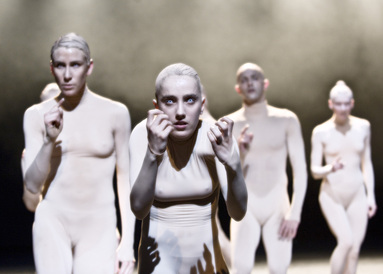 Sharon Eyal & Gai Bachar’s Corps de Walk, photo by Erik Berg Sharon Eyal & Gai Bachar’s Corps de Walk, photo by Erik Berg Benoît Lachambre’s Snakeskins: because you can only accuse Lachambre of being so hit-or-miss due to his uncompromising commitment to his artistic pursuits… and he’s due for a hit. (October 10-12, Usine C) Nicolas Cantin’s Grand singe: because nobody else manages to pack as much punch by doing so little. (October 30-November 1, Usine C) Brian Brooks’s Big City & Motor: because Brooks explores concepts that only push his choreography further into the physical world, turning the human body into little more than a machine. (November 22-25, Tangente) Karine Denault’s PLEASURE DOME: because we haven’t seen her work since 2007, when she presented the intimate Not I & Others using only half of the small Tangente space, dancing with humility, as though the line between performer and spectator simply hinged on a matter of perspective. (February 6-9, Agora de la danse) Pieter Ampe & Guilherme Garrido’s Still Standing You: because Ampe & Garrido have created one of the most compelling shows of the past few years, a dense study of masculinity and friendship covered with a thick layer of Jackass trash. (February 12-16, La Chapelle) Sharon Eyal & Gai Bachar’s Corps de Walk: because it’s the first time we get to see a work by Eyal in six years, when she blew us away with a non-stop human parade that was decidedly contemporary in its transnationalism and use of everyday movements like talking on cell phones. (February 28-March 2, Danse Danse) Mélanie Demers’s Goodbye: because, much like David Lynch did with Inland Empire, Demers demonstrated that an artist doesn’t need to instill suspension of disbelief in its audience to work, that dance can be powerful as dance just as film can be powerful as film. (March 20-22, Usine C) Maïgwenn Desbois’s Six pieds sur terre: because Desbois demonstrated that one doesn’t need to sacrifice art in order to make integrated dance. (March 21-24, Tangente) Yaëlle & Noémie Azoulay’s Haute Tension: because Yaëlle Azoulay came up with the most exclamative piece ever presented at the Biennales de Gigue Contemporaine. (March 28-30, Tangente) Dorian Nuskind-Oder’s Pale Water: because with simple means Nuskind-Oder manages to create everyday magic. (May 10-12, Tangente) |
Sylvain Verstricht
has an MA in Film Studies and works in contemporary dance. His fiction has appeared in Headlight Anthology, Cactus Heart, and Birkensnake. s.verstricht [at] gmail [dot] com Categories
All
|



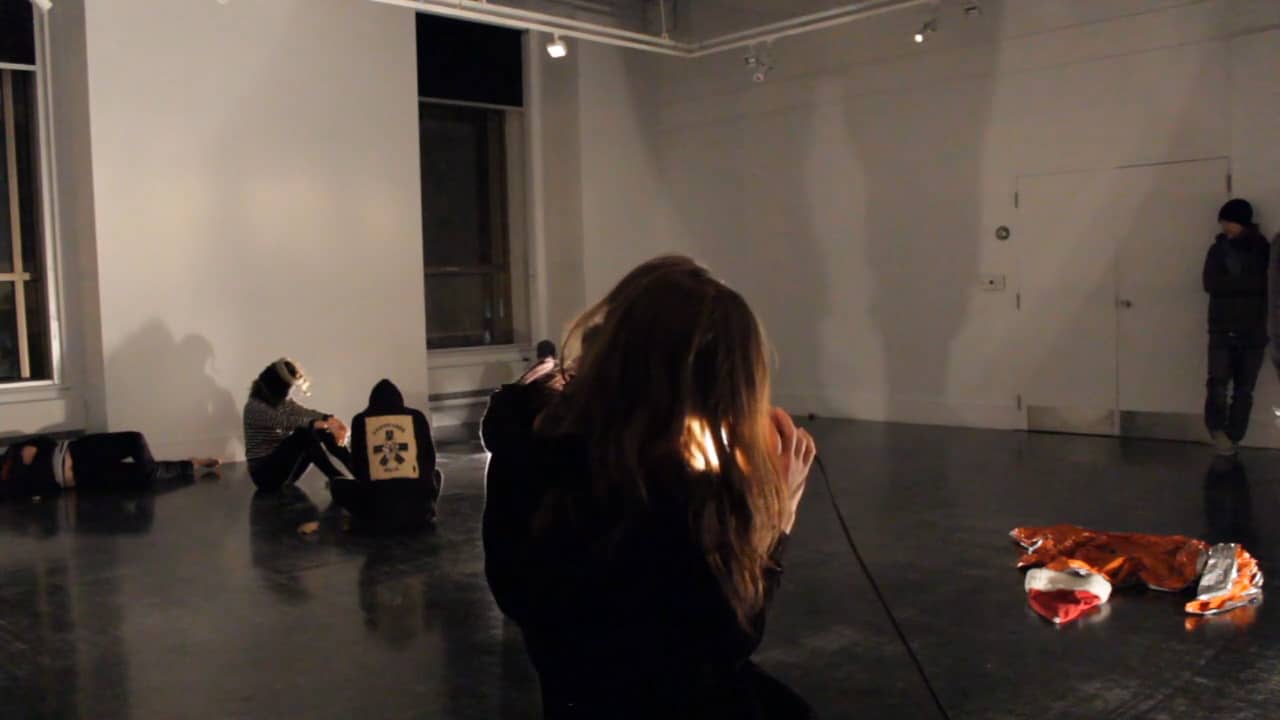
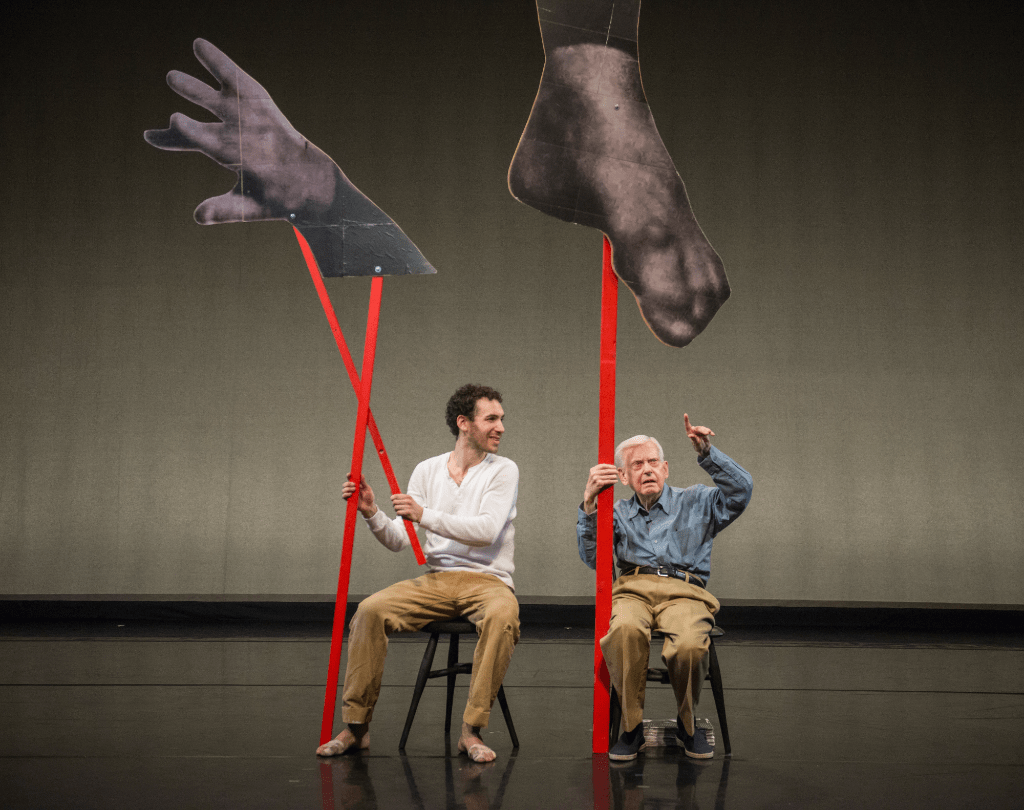
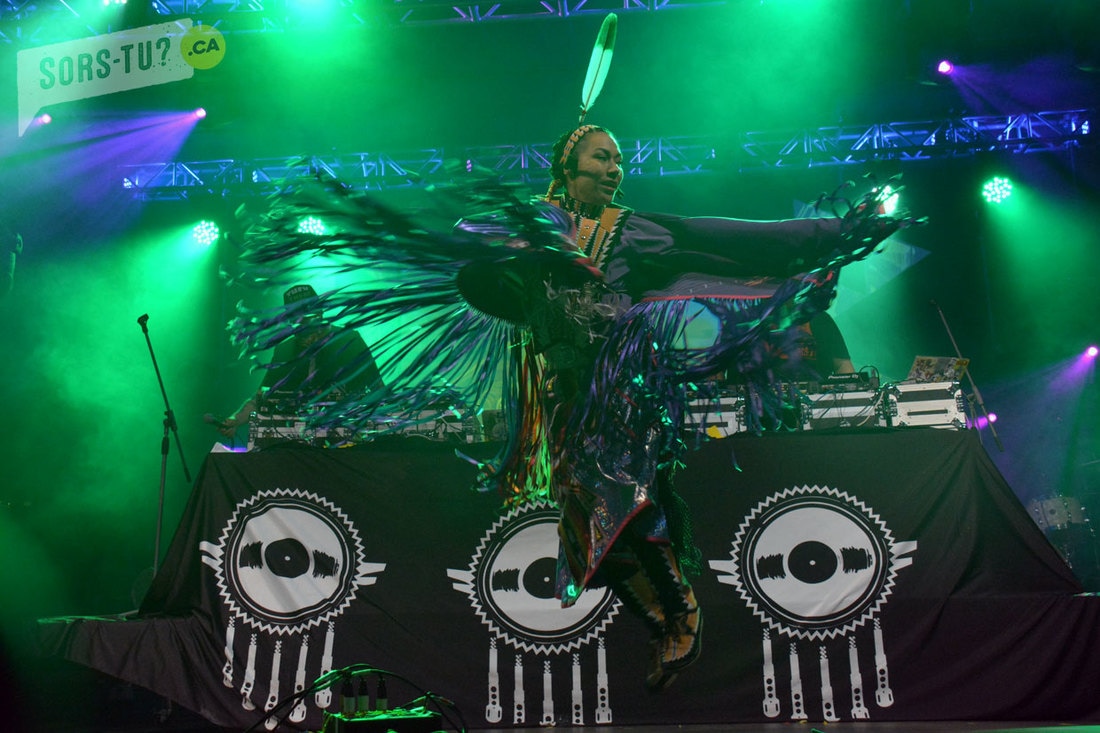
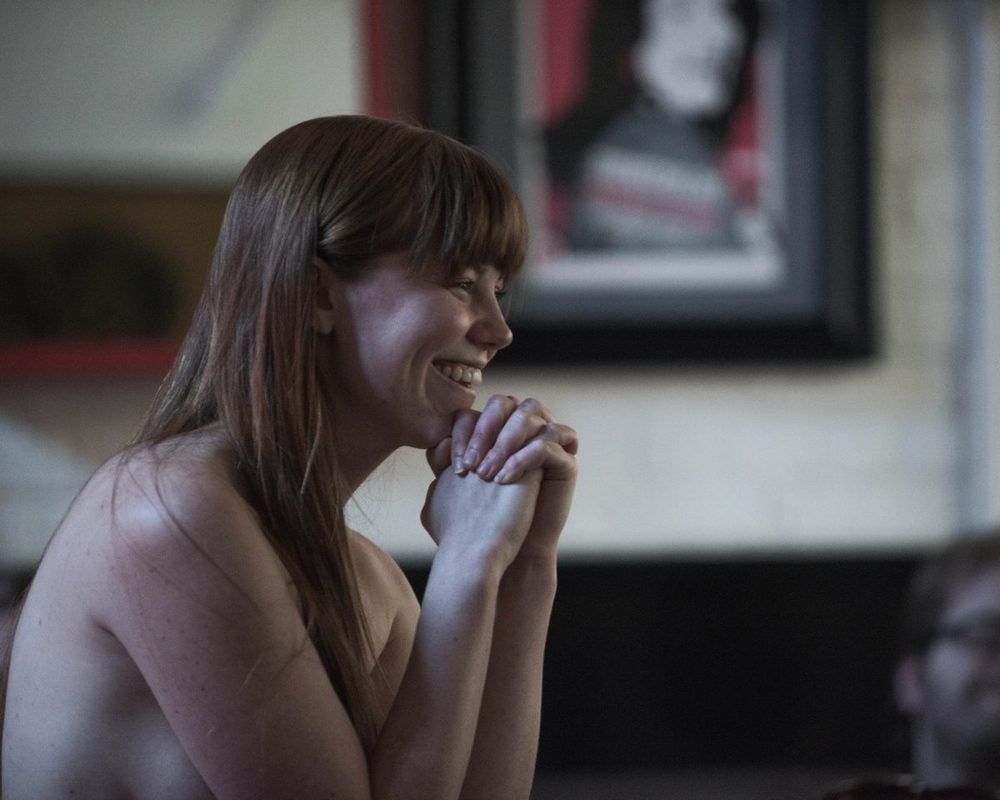
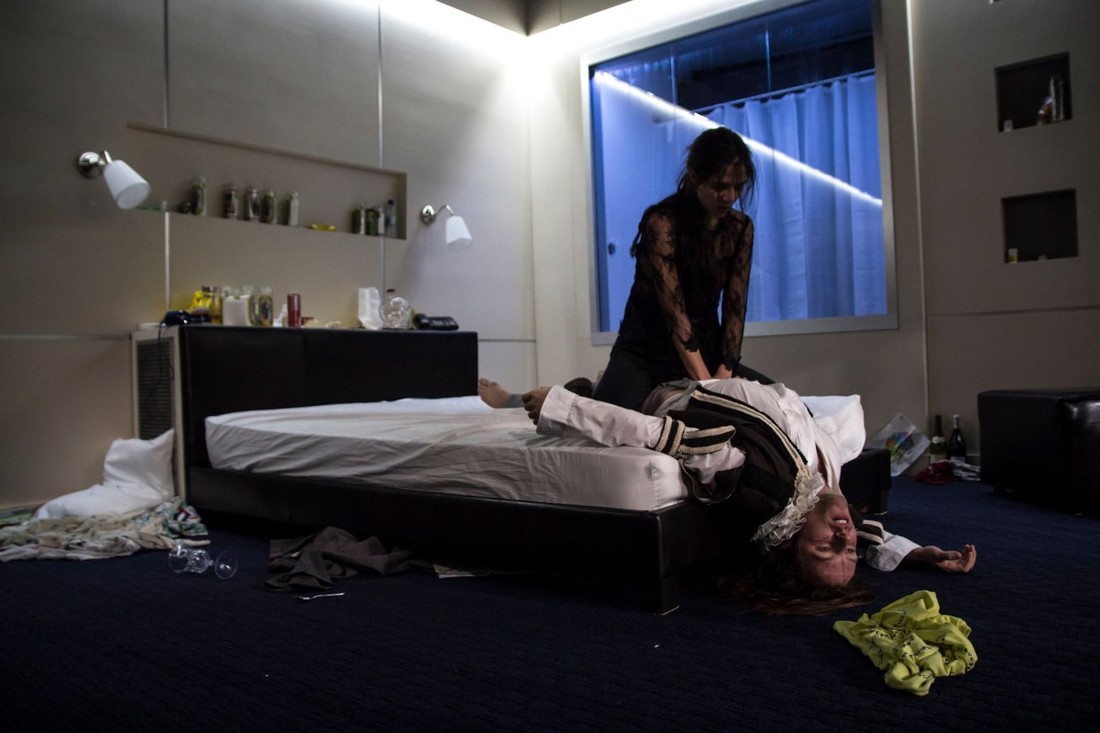
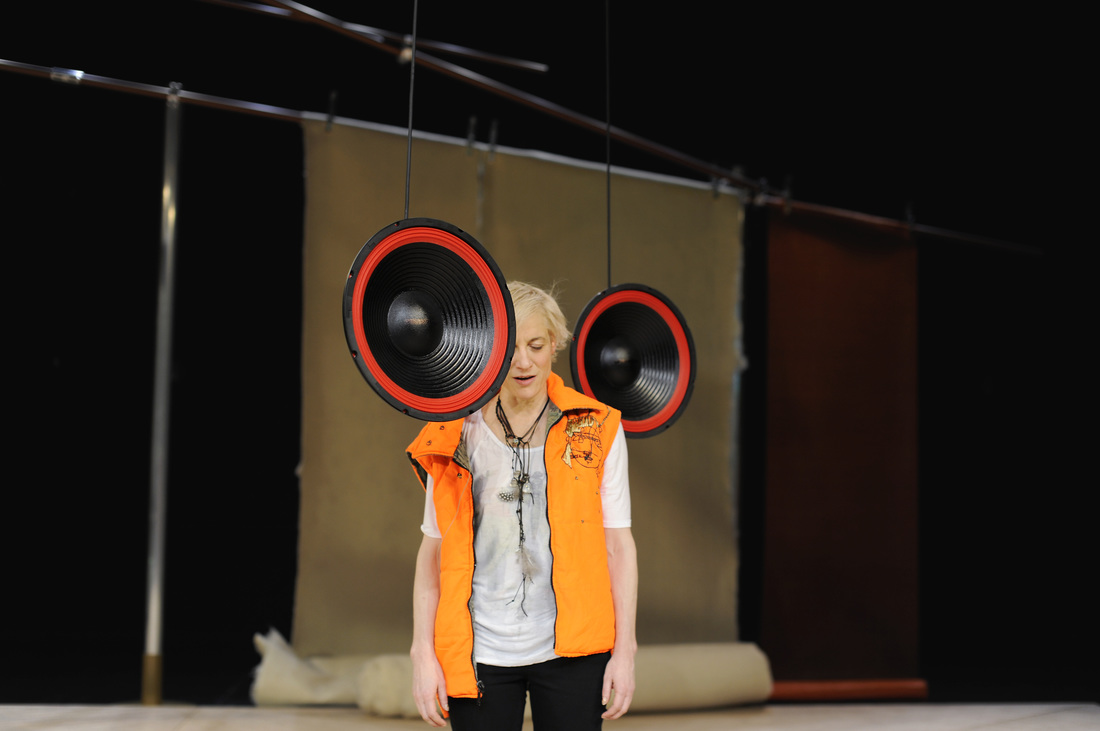
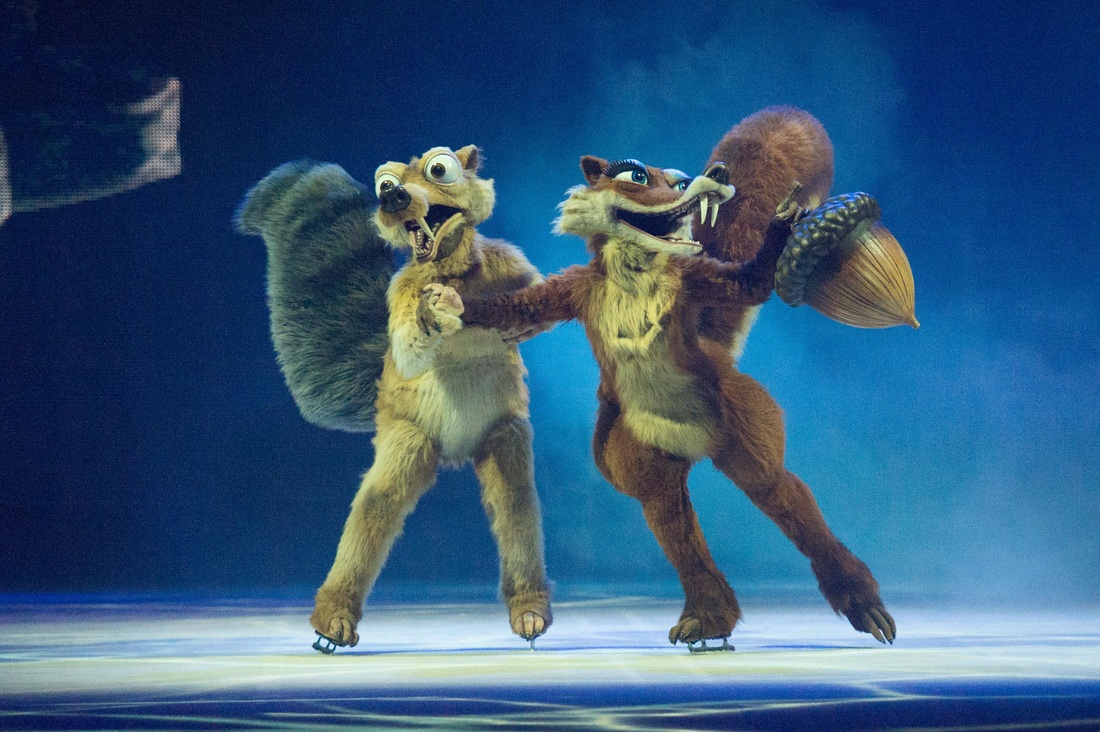
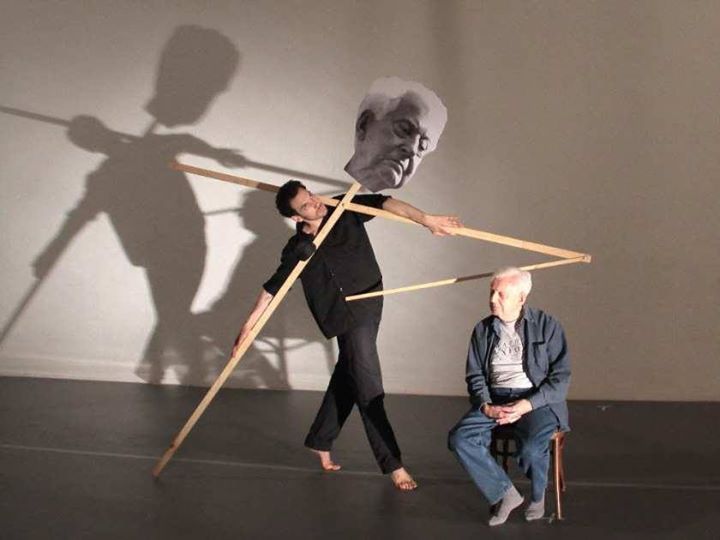
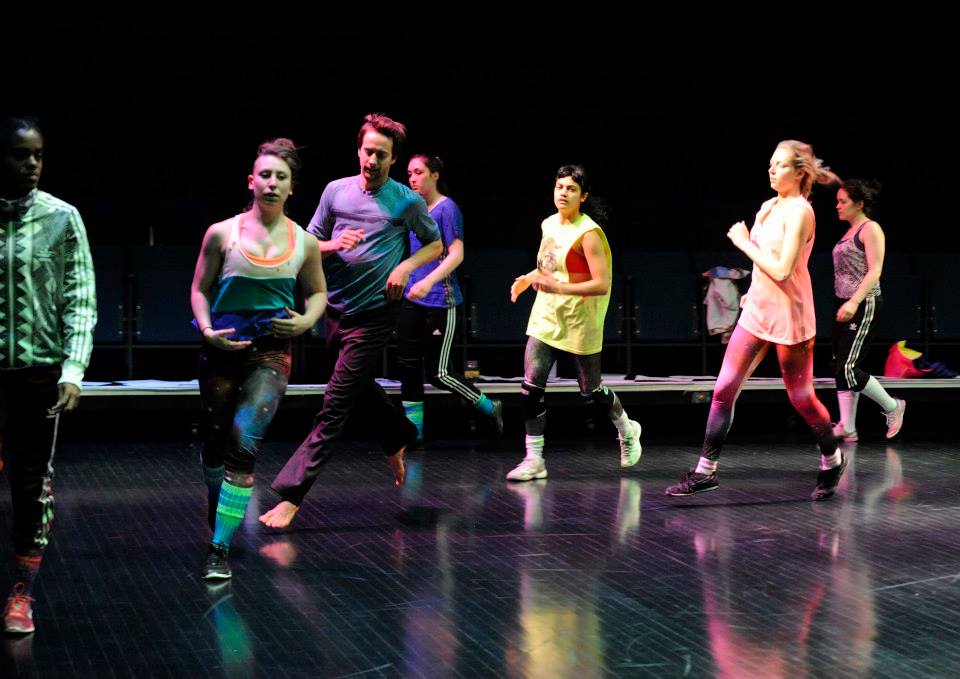
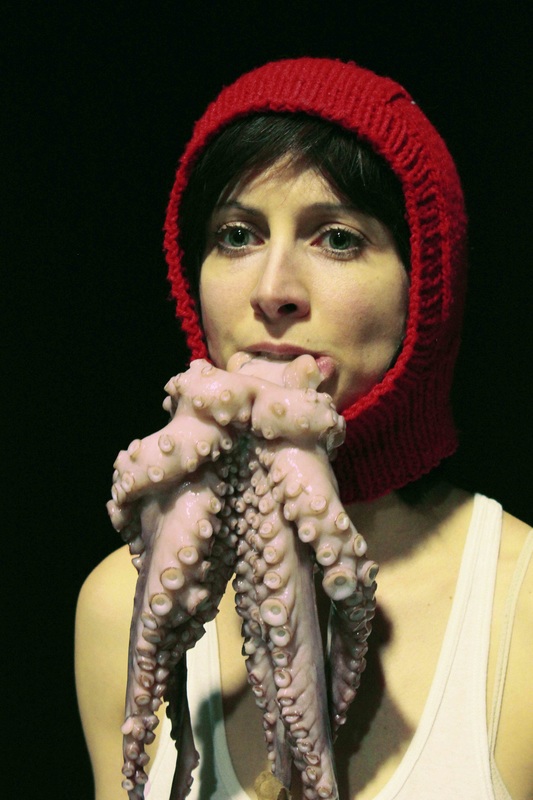
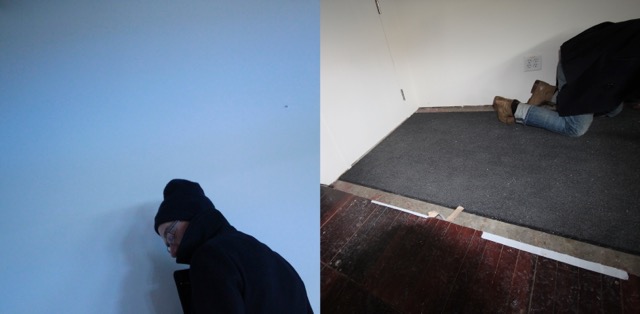
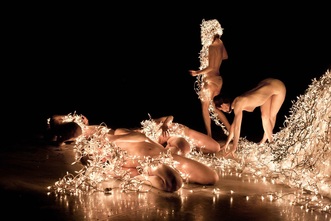
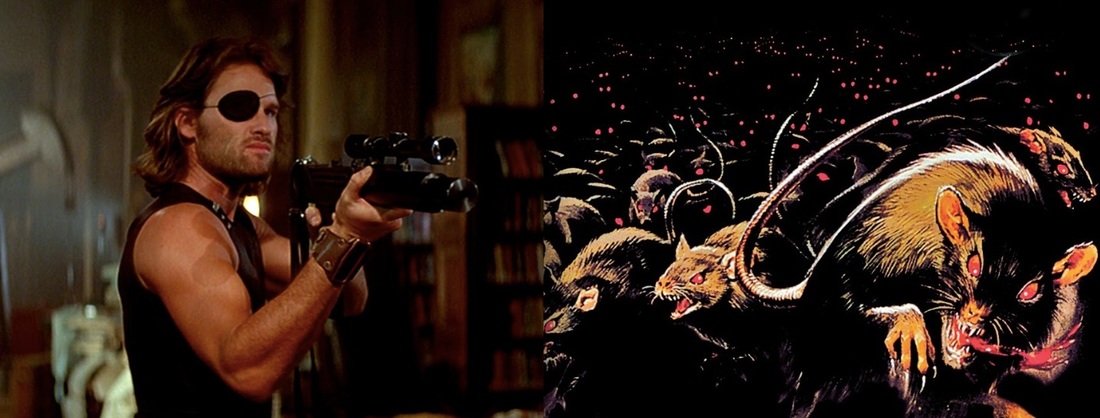
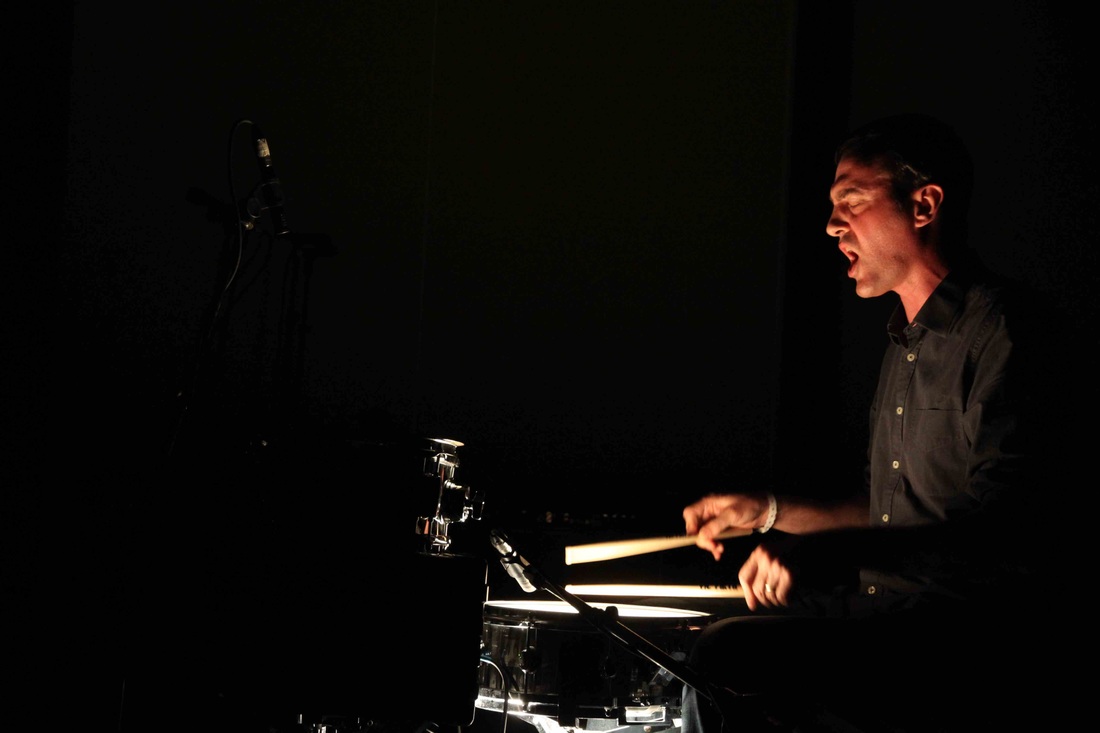

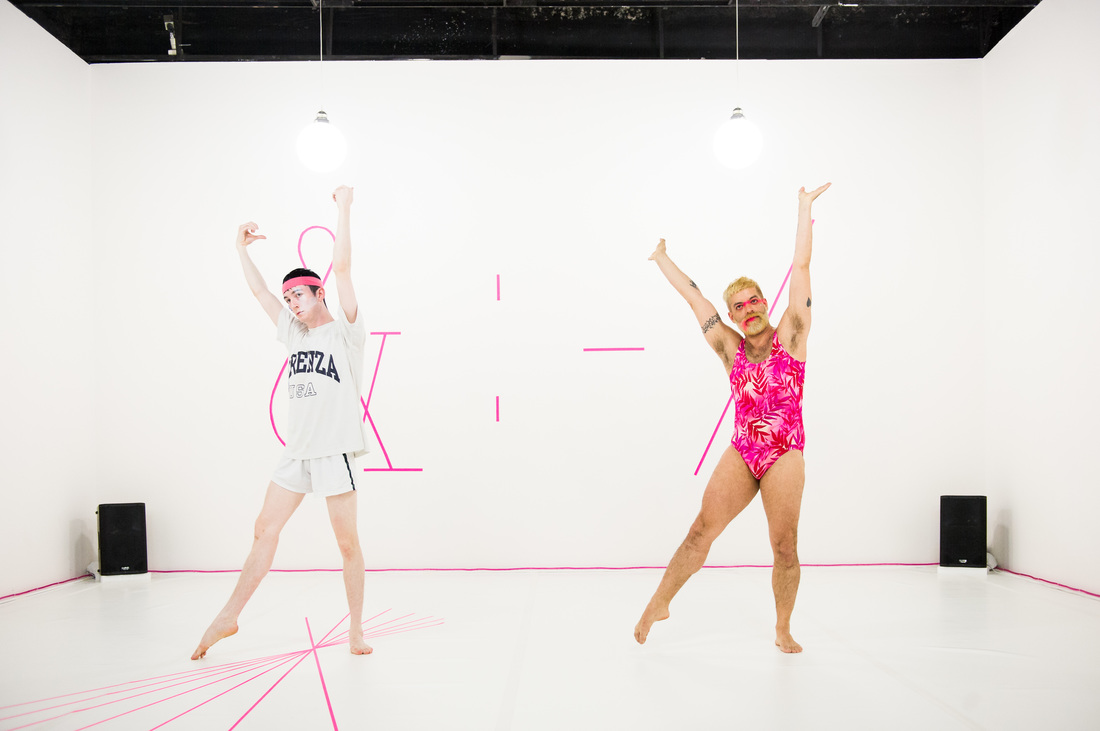
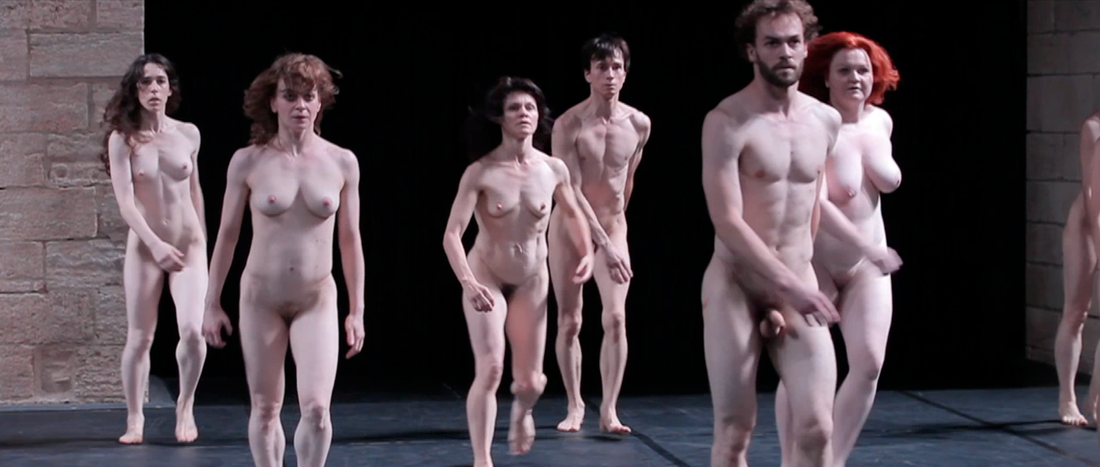
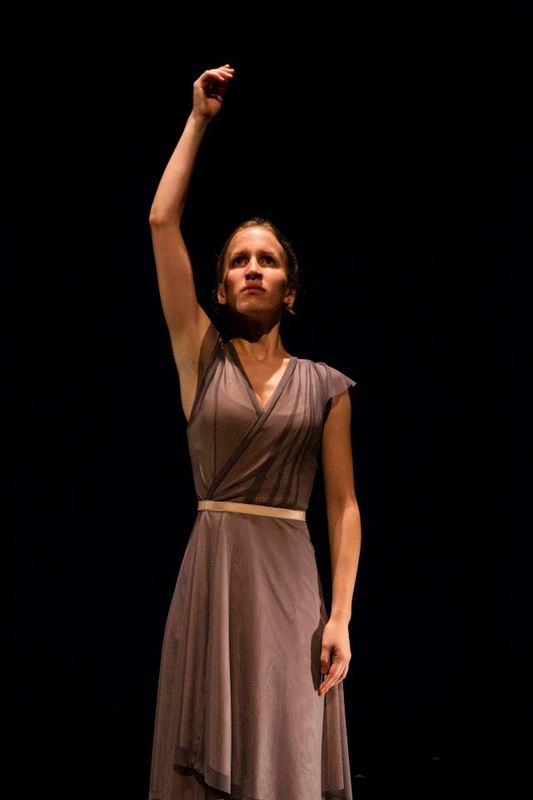
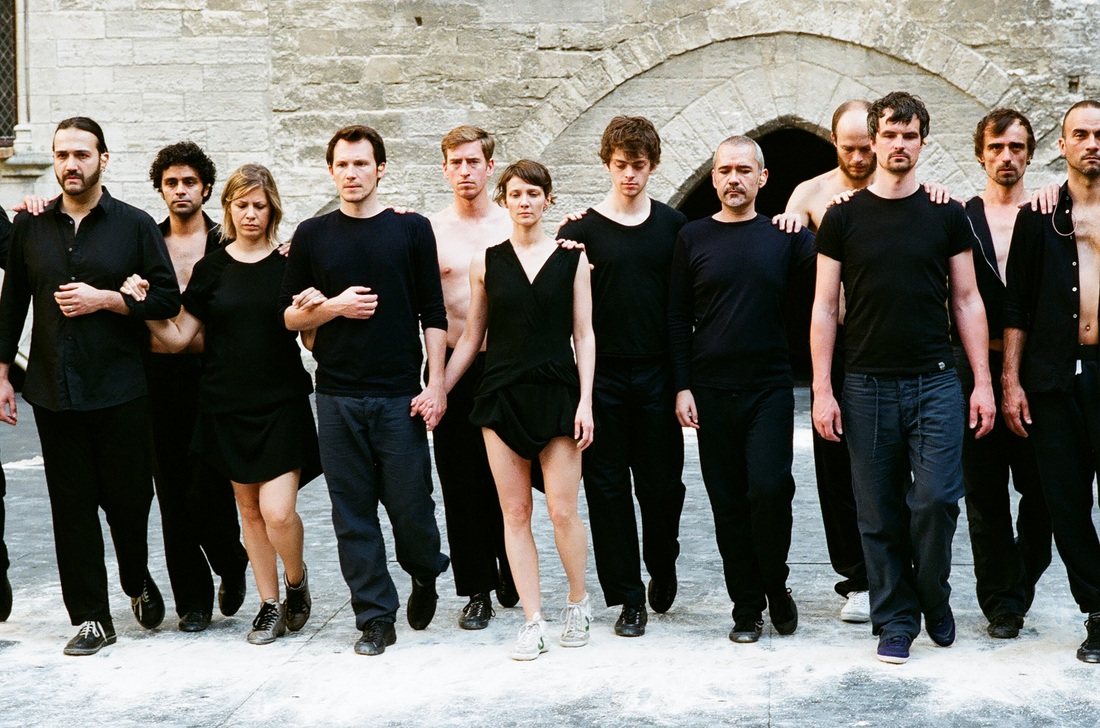
 RSS Feed
RSS Feed